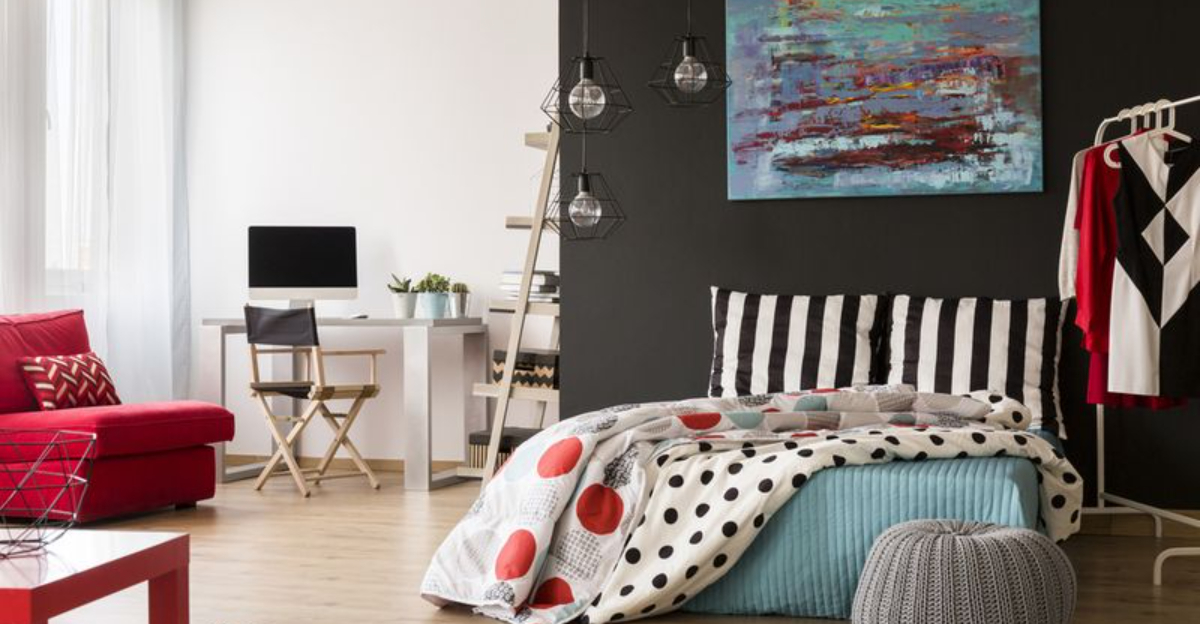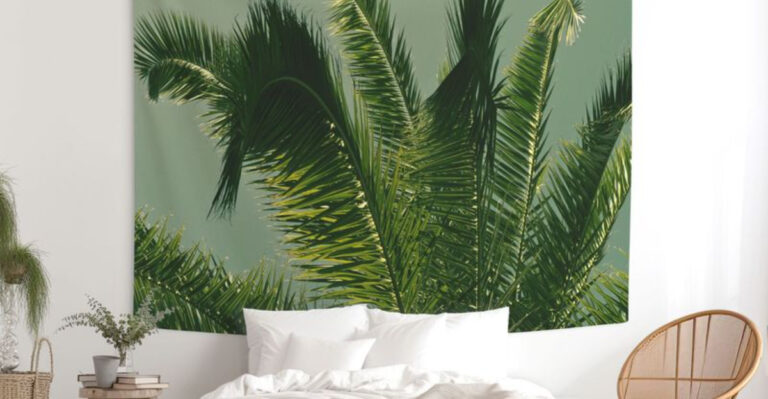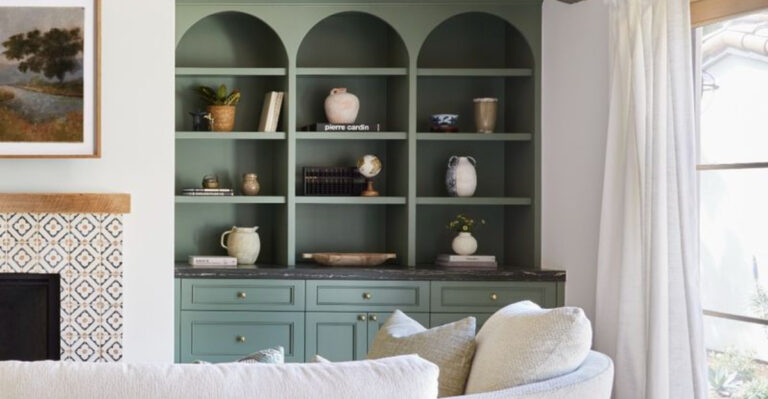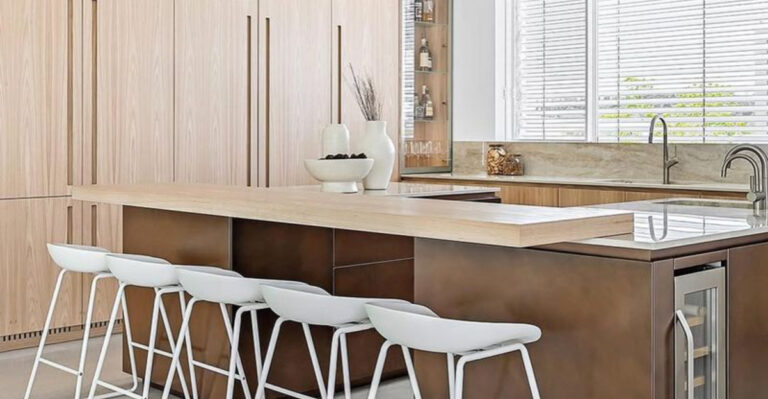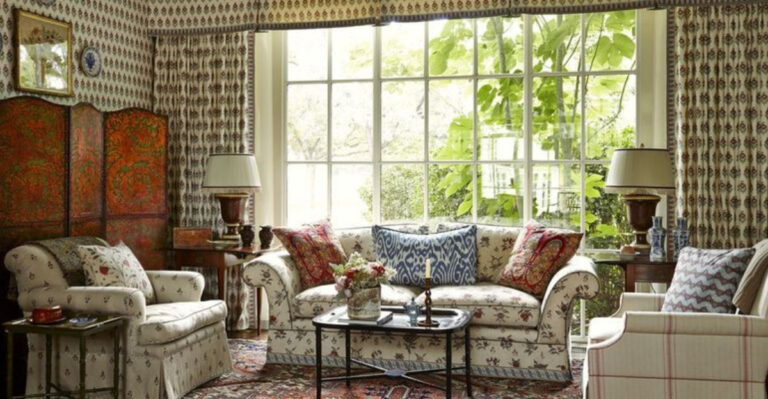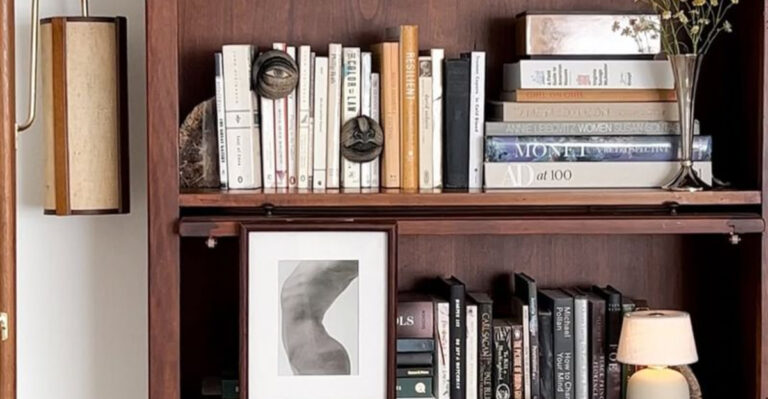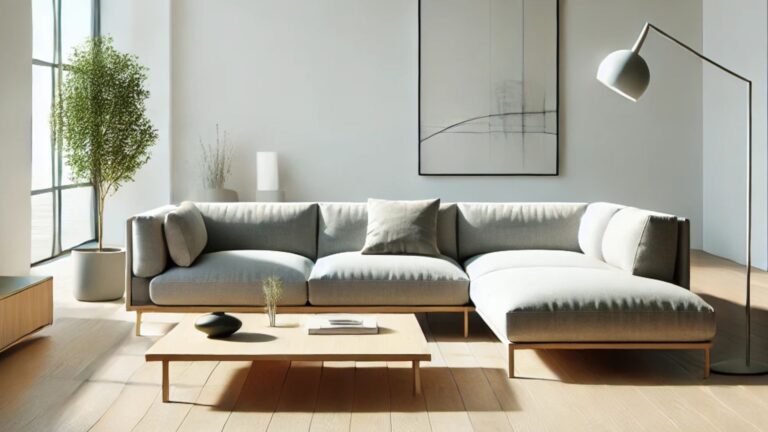11 Interior Items Designers Say You Should Never Waste Money On (And 8 To Not Even Think About Buying)
I’ve made my share of home purchases that seemed like great ideas at the time, until they clashed with my space, gathered dust, or just didn’t stand the test of time.
Interior designers have seen it all and know which items tend to become decorating regrets. If you want a home that not only looks amazing but also works for you, it’s smart to take their advice seriously.
I’m excited to share 11 things designers say you should never buy, plus 8 more offenders that often cause more headaches than happiness. Trust me, your future self will thank you!
1. Gravity-Defying Floating Nightstands
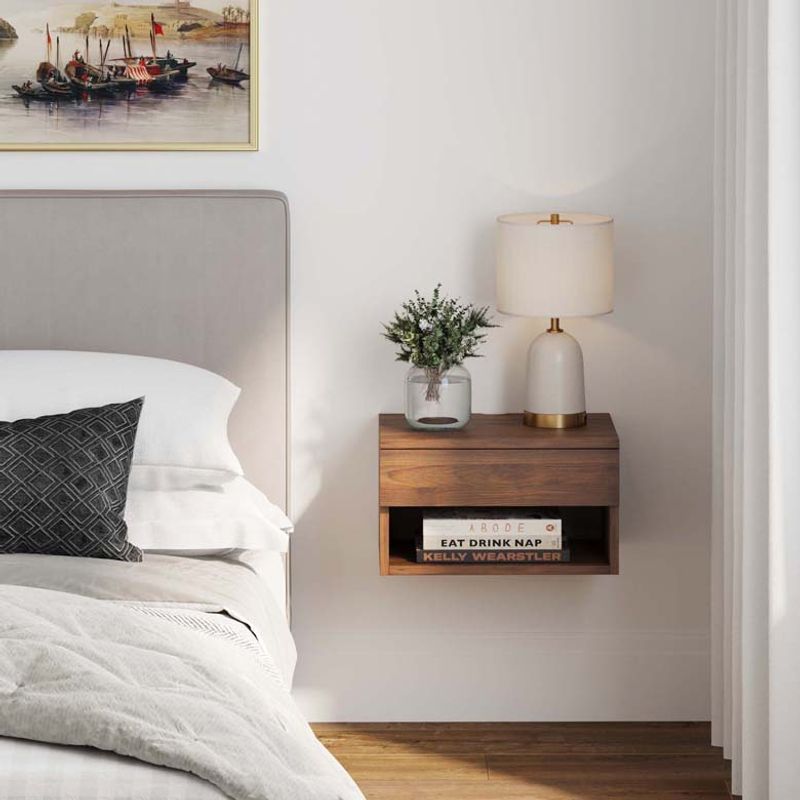
Wall-mounted floating nightstands promise sleek minimalism but deliver maximum headaches instead. Installing these requires precise measurements, multiple wall anchors, and often professional help that costs more than the furniture itself.
Most renters discover too late that landlords hate the giant holes left behind. Even homeowners regret the commitment when they want to rearrange furniture later.
Traditional nightstands offer storage flexibility and easy repositioning without turning your walls into Swiss cheese. Save your security deposit and your sanity.
2. Mass-Produced Wall Art
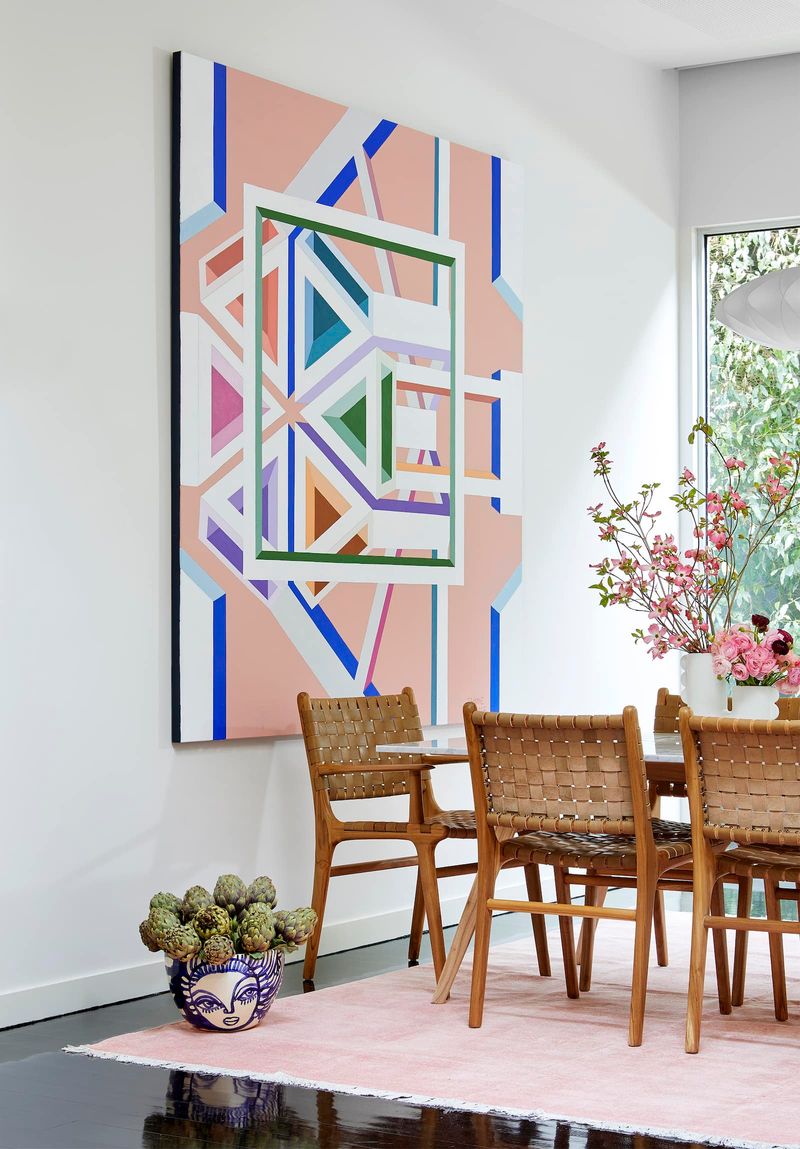
Walk into any big box store and you’ll spot those generic canvas prints with inspirational quotes or Paris skylines. Professional designers cringe at these pieces because they lack personality and scream “I didn’t know what else to put here.”
Your walls deserve better! Instead, hunt for original artwork at local galleries, student shows, or online marketplaces where emerging artists sell their work. Even framed personal photos tell more about you than mass-market wall fillers.
3. Matching Furniture Sets
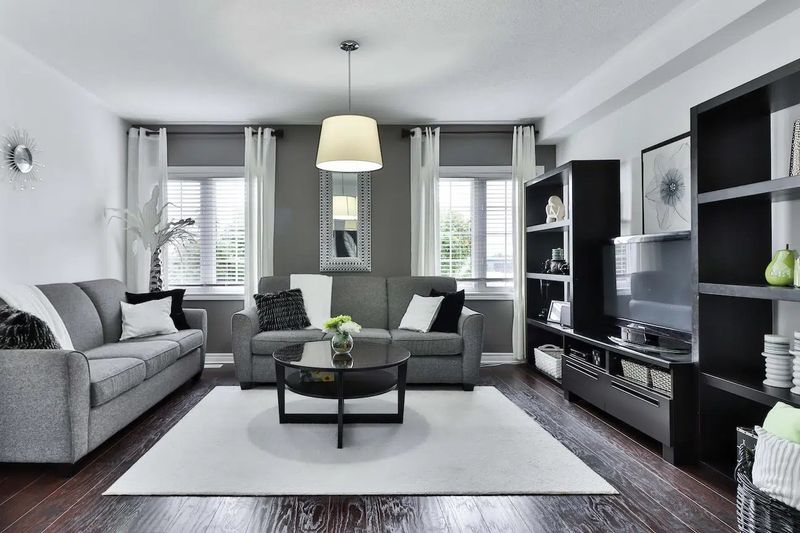
Remember those showroom displays where everything matches perfectly? While tempting, matching sets create a flat, uninspired look that lacks character and depth.
Designers recommend building a collection of complementary pieces that work together without being identical twins. This approach creates visual interest and makes your space feel thoughtfully curated rather than ordered from a catalog page.
4. Trendy Accent Walls
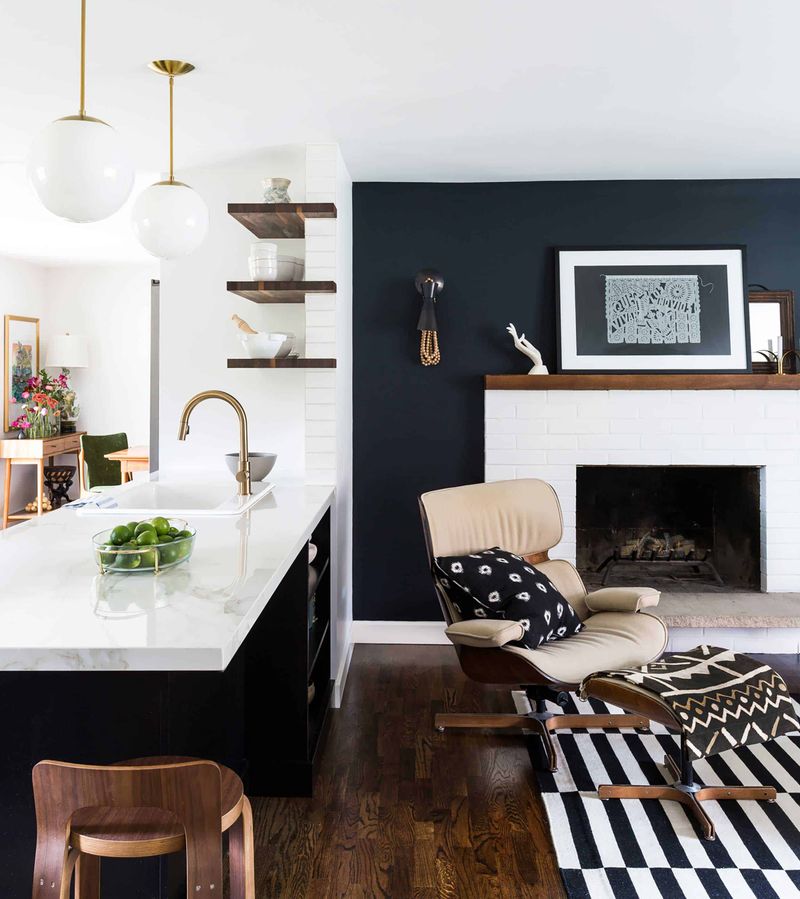
Chevron, geometric patterns, or that ubiquitous farmhouse shiplap might seem Instagram-worthy today, but highly trendy accent walls quickly become tomorrow’s renovation project. Design professionals see these features as short-term commitments that homeowners soon regret.
If you’re craving visual interest, consider artwork, textural elements like grasscloth wallpaper, or classic architectural details instead. These additions provide character without becoming dated before the paint fully dries.
5. Cheap Area Rugs
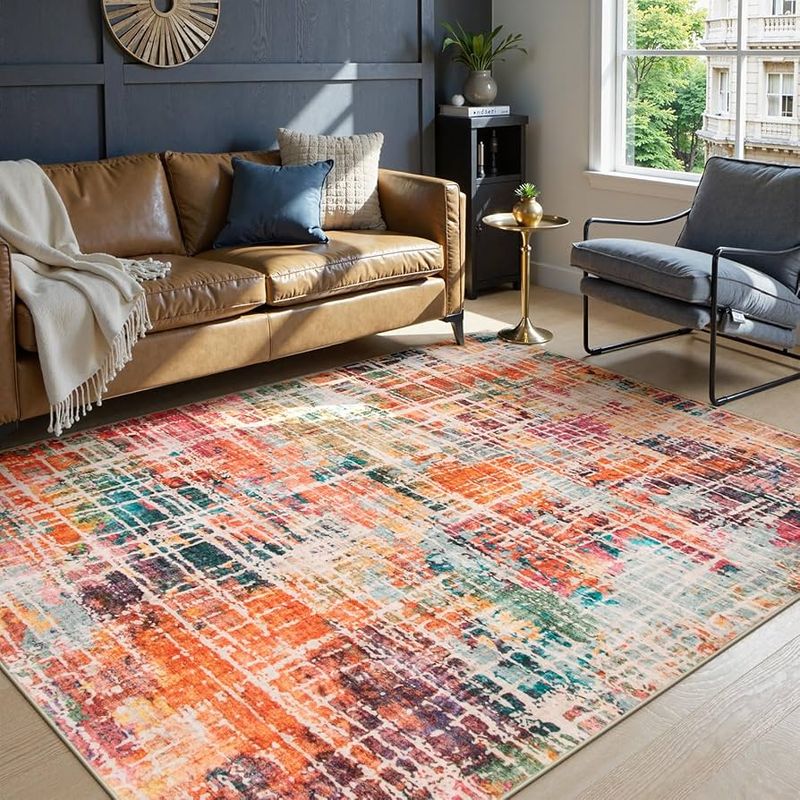
Underneath your feet lies one of the biggest interior design mistakes: the bargain basement area rug. Those thin, synthetic rugs with vibrant patterns might seem like an easy way to add color, but they usually disappoint.
Budget rugs often curl at the edges, shed continuously, and wear out within months. They also feel unpleasant underfoot – hardly the luxurious experience you want when padding around barefoot.
Save up for quality natural fibers that will last for years instead!
6. Word Art Signs

Nothing screams “I let Pinterest decorate my house” quite like those wooden signs declaring “Blessed” or “Farmhouse Kitchen.” Interior designers unanimously agree these text-based decorations have saturated homes beyond reason.
Your guests don’t need labels to identify your kitchen or reminders to be grateful. Instead, express your personality through meaningful art or objects with personal history.
Let your home speak through authentic design choices rather than literal words on the wall.
7. Overfilled Throw Pillow Collections
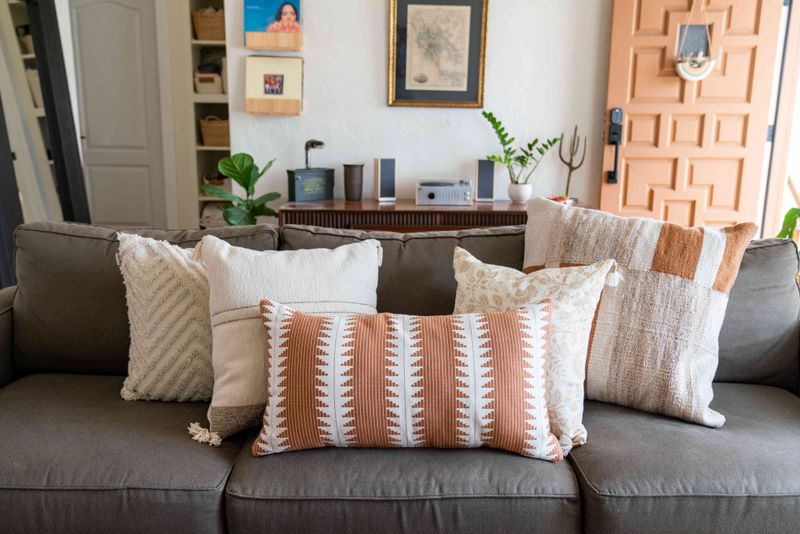
Six pillows per couch, four on each chair, three on the bench – where exactly are people supposed to sit? The throw pillow explosion has reached epidemic proportions in some homes.
While these accessories add color and texture, there’s a fine line between stylish and suffocating. Most designers recommend a thoughtful selection of 2-3 quality pillows per seating area instead of the pillow fortress approach.
8. Outdated Bathroom Sets

Those matching plastic bathroom sets – coordinated soap dispenser, toothbrush holder, and wastebasket – give professional designers the shivers. Usually found in big box stores, these matchy-matchy collections look cheap and create a hotel bathroom vibe.
Mixing materials creates a more sophisticated look. Try a ceramic soap dish, glass containers for cotton balls, and a substantial stone or wood toothbrush holder.
9. Temporary Furniture Solutions
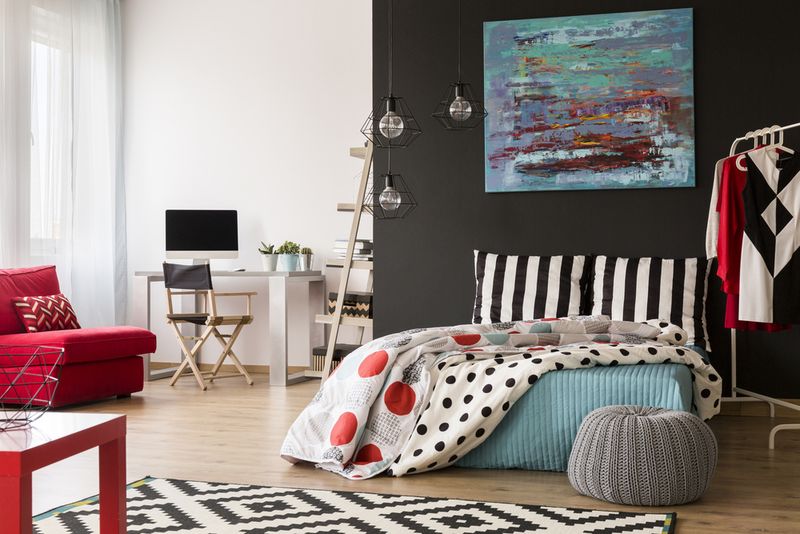
We’ve all been there – buying that “just for now” bookshelf or dining table while planning to upgrade “someday.” Fast forward five years, and those temporary pieces are still hanging around, often looking worn and miserable.
Interior designers strongly advise saving longer for quality basics rather than filling your space with placeholder furniture. The cheap particleboard pieces often cost more in the long run when you factor in replacements.
Better to have fewer well-made items than a house full of deteriorating temporaries!
10. Furniture With Built-In Cup Holders
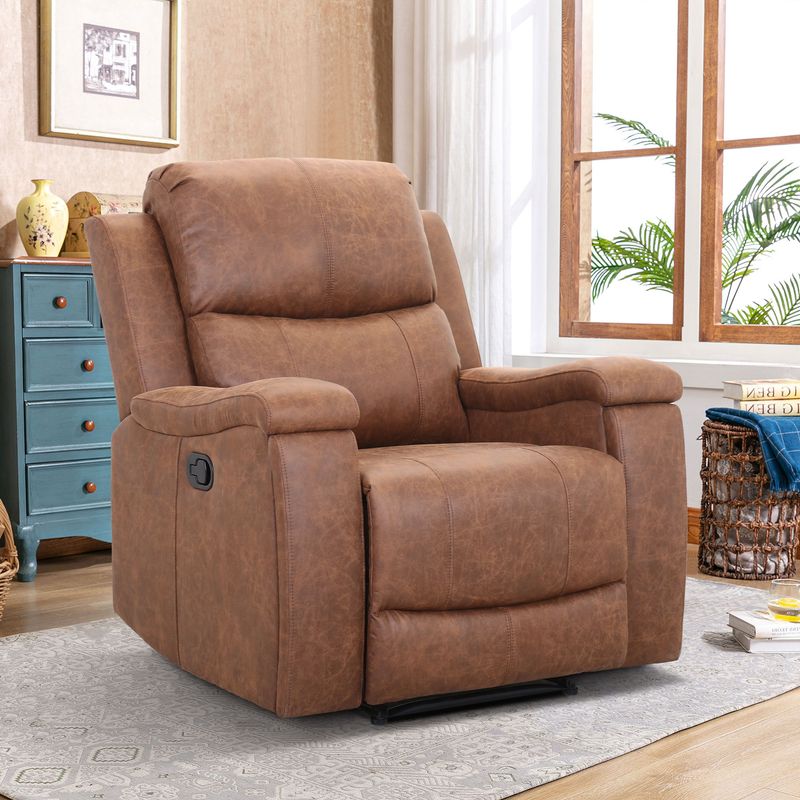
Sure, that recliner with integrated cup holders, phone chargers, and massage features sounds amazing for movie night. However, designers warn these multi-function pieces scream “man cave” rather than sophisticated living space.
Function-heavy furniture typically sacrifices style and ages poorly as technology changes. Plus, those cup holders inevitably collect crumbs and sticky residue.
Opt for timeless pieces accompanied by elegant side tables that can hold your drinks just as effectively.
11. Faux Marble Everything
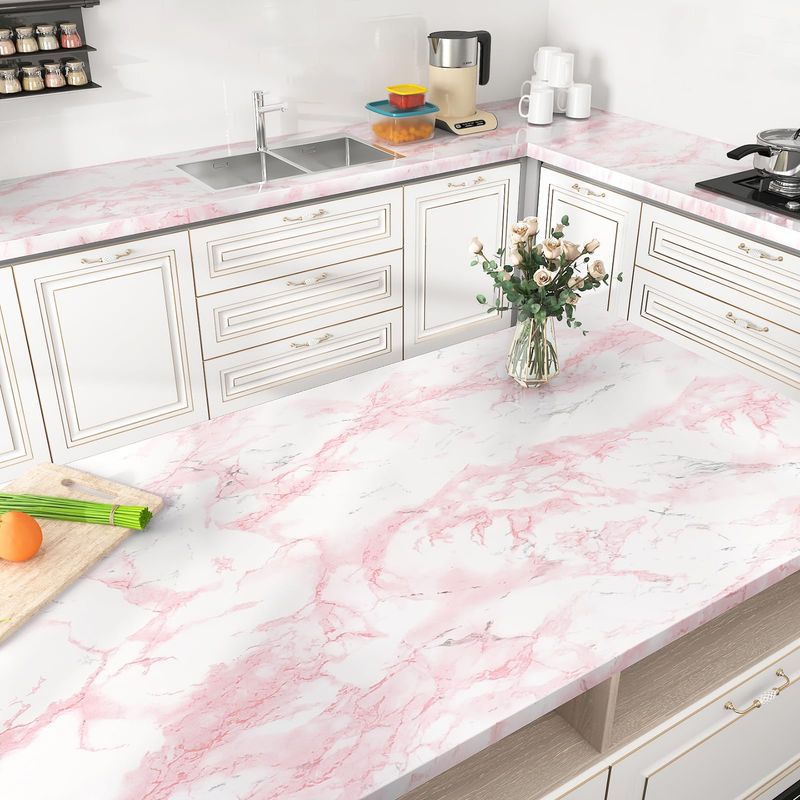
From contact paper countertops to plastic table lamps, faux marble has infiltrated home decor at every price point. While genuine marble adds timeless luxury, the imitation versions with their repetitive patterns and plastic sheen fool absolutely no one.
Designers suggest embracing authentic materials within your budget instead. Real wood, concrete, or quality ceramic offer genuine character at reasonable prices.
1. Fake Plants That Look Fake
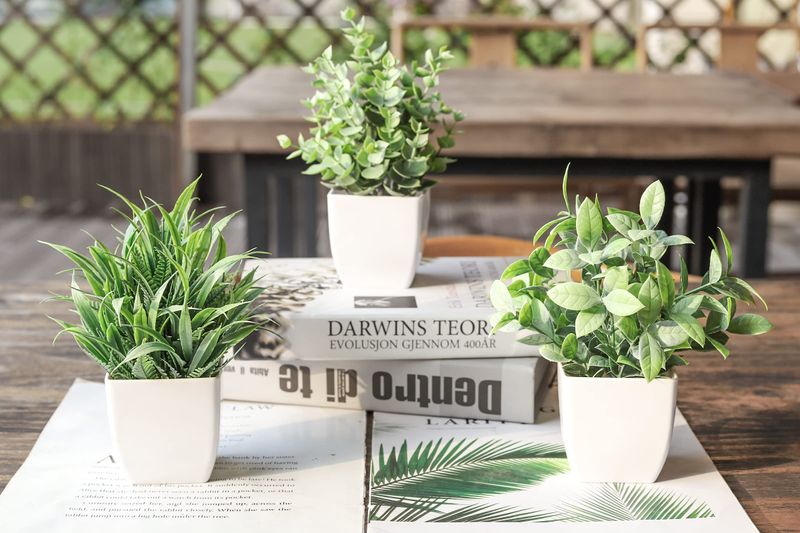
Those dusty, plastic ferns fooling absolutely no one are high on designers’ hit list. Low-quality artificial greenery with unrealistic colors and plastic-looking leaves cheapens even the most expensive rooms.
If you can’t maintain real plants, invest in high-quality silk or modern artificial options that actually mimic nature. The technology has improved dramatically, with some faux plants now featuring realistic texture and coloration.
Just remember: no plant is better than an obviously fake one!
2. Oversized Sectionals
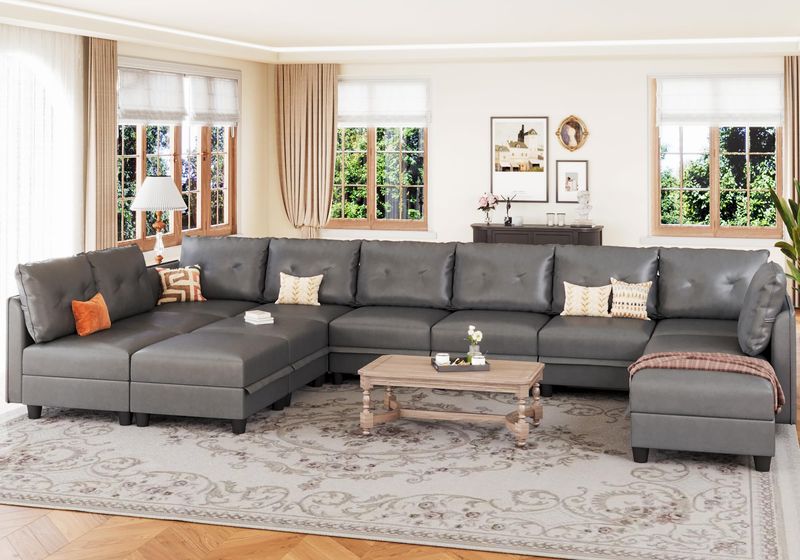
Bigger isn’t always better when it comes to your living room seating. Those massive, overstuffed sectionals that swallow half your living space create more problems than they solve.
What seems cozy in the showroom often overwhelms average-sized rooms, blocks natural pathways, and limits furniture arrangement options. Scale matters tremendously in design.
Choose proportional pieces that allow for conversation areas and easy movement throughout the space instead of one mammoth couch that dominates everything.
3. Doorway Beaded Curtains

Unless you’re decorating a time capsule from 1976, those clacking beaded curtains hanging in doorways should stay in vintage shops. What once seemed bohemian now reads as dated and collects dust at alarming rates.
Modern interior design favors clean sightlines and uninterrupted flow between spaces. If you need to define areas without solid doors, consider architectural solutions like partial walls, glass partitions, or elegant fabric panels.
4. Over-Themed Rooms

Having a slight obsession with beaches doesn’t mean your entire living room needs seashells, lighthouse lamps, and navy blue everything. Heavily themed rooms quickly become overwhelming and one-dimensional.
Design experts recommend incorporating your passions through subtle touches rather than all-out theme domination. A few carefully chosen coastal elements mixed with neutral basics creates a more sophisticated nod to your beach love.
This approach keeps your space from feeling like a themed restaurant!
5. Too-Small Area Rugs
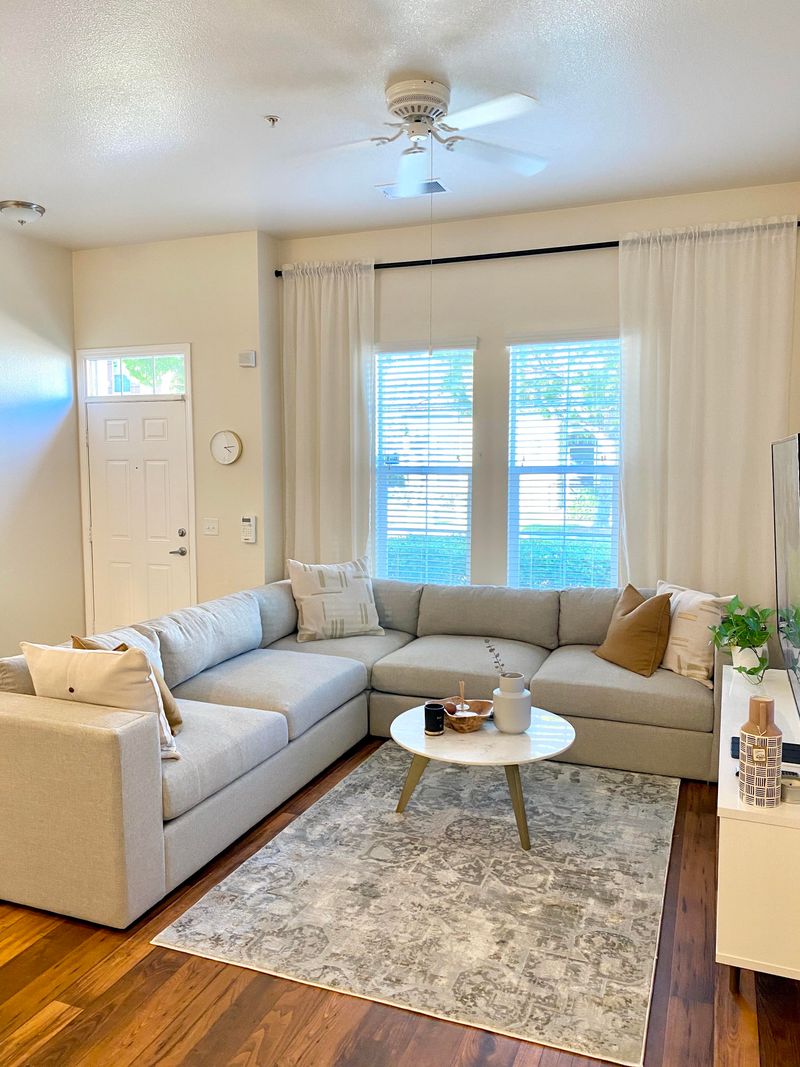
Picture this: a tiny area rug floating in the middle of your living room like a lonely island. This common mistake makes rooms feel disjointed and awkward rather than cohesive.
Designers have a simple rule – a rug should be large enough for all furniture legs to sit comfortably on it, or at minimum, the front legs of major pieces. This creates a defined conversation area that feels intentionally designed.
When in doubt, go bigger rather than smaller with your rug selection!
6. Fake Books As Decor

Those color-coordinated book collections with spines that match your decor perfectly? They might look harmonious on Instagram, but designers consider them the equivalent of empty intellectual calories.
Books should reflect your interests and experiences, not your color scheme. Real collections tell visitors something about who you are and what matters to you.
If you’re not a reader, find other meaningful objects to display rather than hollow props that serve no purpose beyond aesthetics.
7. Gallery Walls Without Purpose

Randomly slapping frames on walls without consideration for content or composition is a fast track to visual chaos. While gallery walls can be stunning, thoughtless versions look cluttered rather than curated.
Successful gallery displays have a unifying element – similar frames, a color theme, or related subject matter. They also contain meaningful images, not just filler art purchased to fill space.
Take time to plan before hammering in those nails!
8. Excessive Artificial Scents
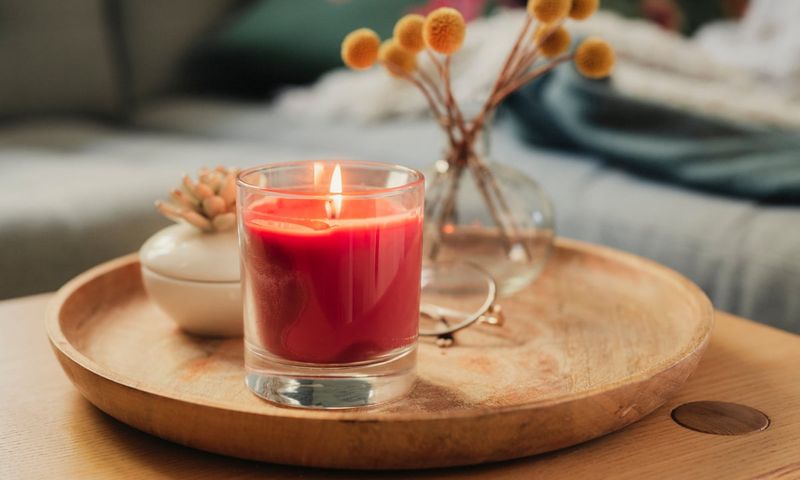
Your nose might have adjusted to that potpourri collection, but visitors are likely overwhelmed by competing artificial fragrances. Interior designers emphasize that smells are part of your home’s ambiance too.
Multiple plug-ins, scented candles, and fragrance diffusers create a chemical cocktail that can trigger headaches and allergies. Not exactly welcoming!
If you want a pleasantly scented home, choose one quality fragrance source per area, or better yet, rely on natural scents from fresh flowers or essential oils.

